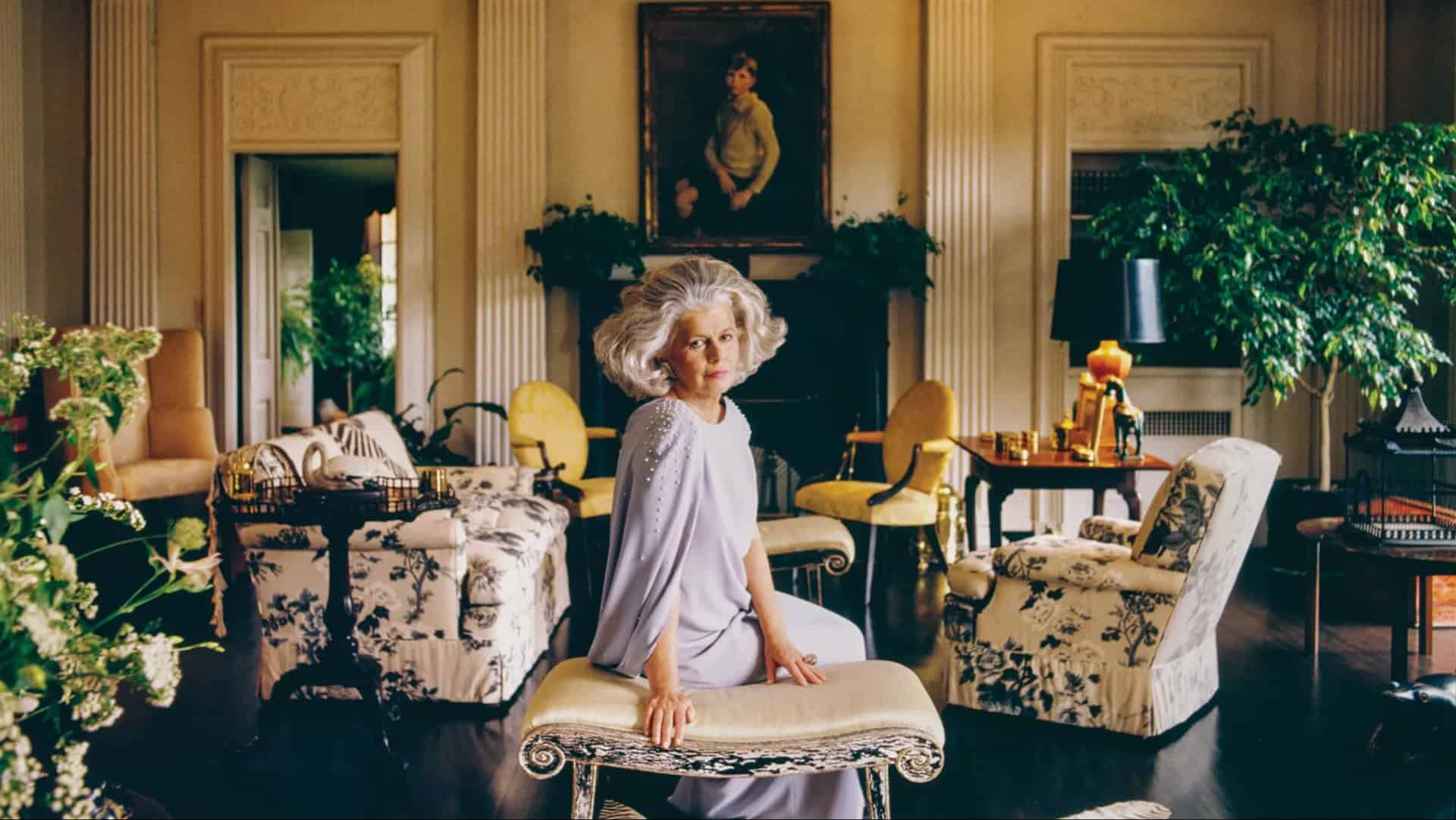The 80s aesthetic is making a comeback, but it’s often portrayed with a modern twist.
Let’s explore what 80s interiors genuinely looked like, highlighting their distinct features, color schemes, and unique items that defined the era.
1. Pastel and Neon Colors
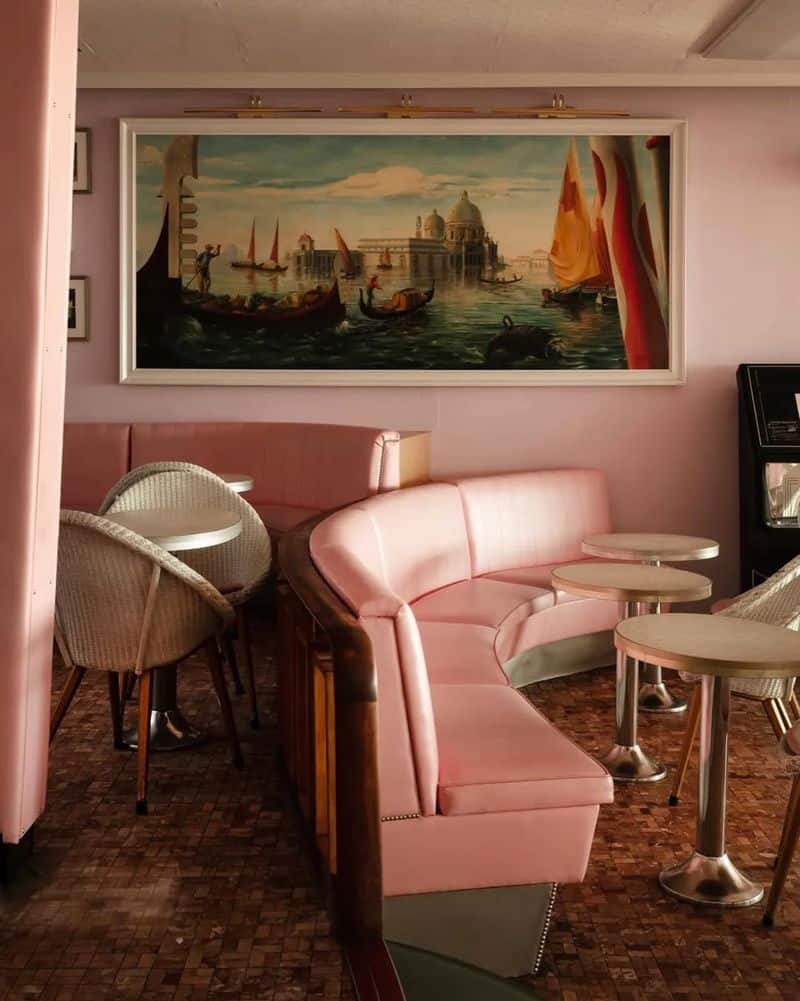
Pastel and neon colors were iconic in 80s interior design. Soft hues like pastel pink, mint green, and baby blue dominated walls and furniture, creating a soothing yet stylish environment.
Contrasting these soft tones, neon accents added a vibrant touch to rooms, often seen in lighting and small decor items.
The combination of pastel and neon was a distinctive feature of the decade, offering a unique blend of calm and energy that captured the playful spirit of the 80s.
2. Floral and Chintz Fabrics
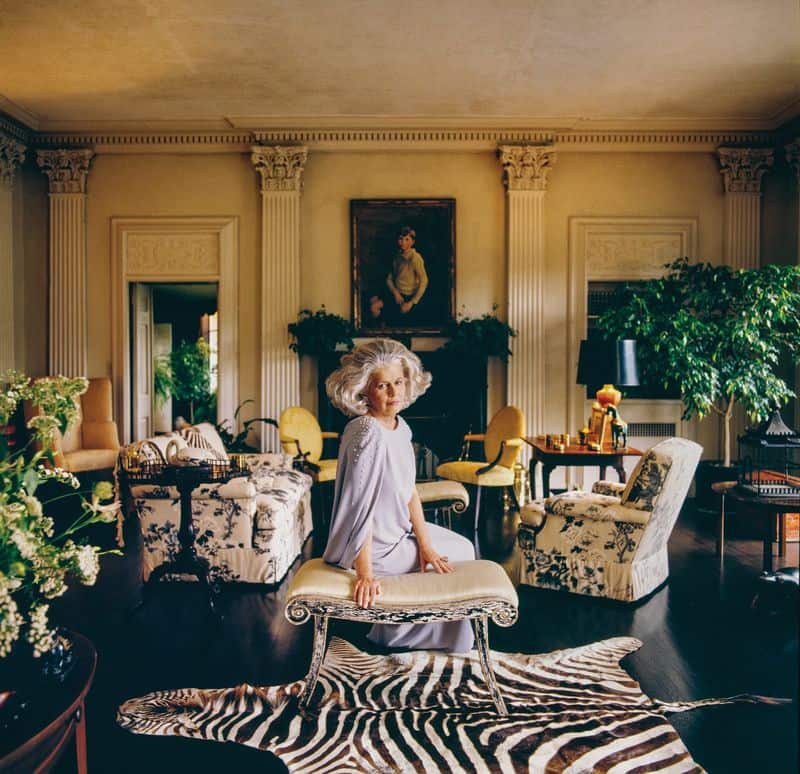
Floral and chintz fabrics offered a touch of elegance and nostalgia in 80s interiors. These fabrics were used in upholstery, curtains, and bedding, featuring intricate floral designs.
The chintz patterns often came in bold, contrasting colors, adding a cheerful vibe to spaces.
Pairing these fabrics with pastel backgrounds created a harmonious and inviting atmosphere, reflecting the era’s blend of traditional and modern stylistic influences.
3. Wall-to-Wall Carpeting
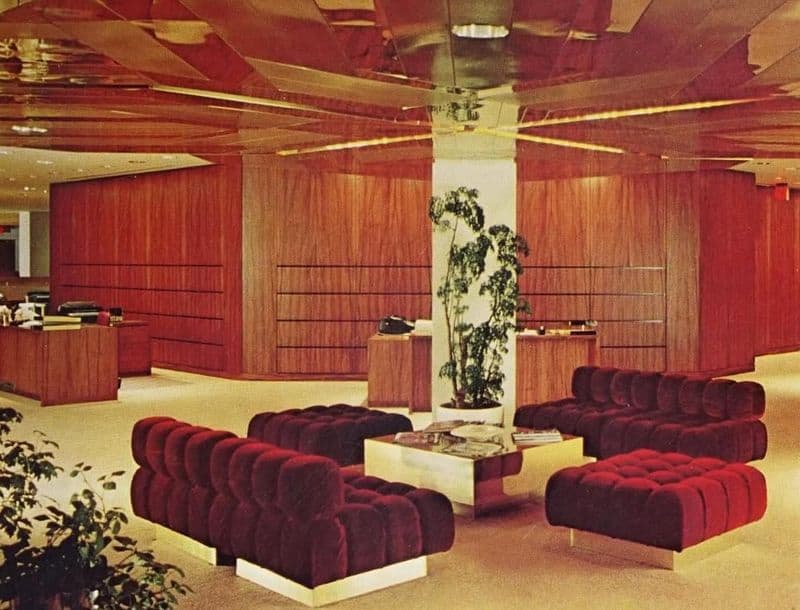
Wall-to-wall carpeting was a staple in 80s homes, offering comfort and warmth. Popular colors included deep blues, burgundies, and earthy tones that added richness to interiors.
The plush texture of these carpets provided a cozy foundation for living areas, bedrooms, and even bathrooms.
This carpeting trend was often paired with area rugs showcasing intricate patterns, adding an extra layer of design complexity and visual interest to rooms.
4. Memphis Design Influence
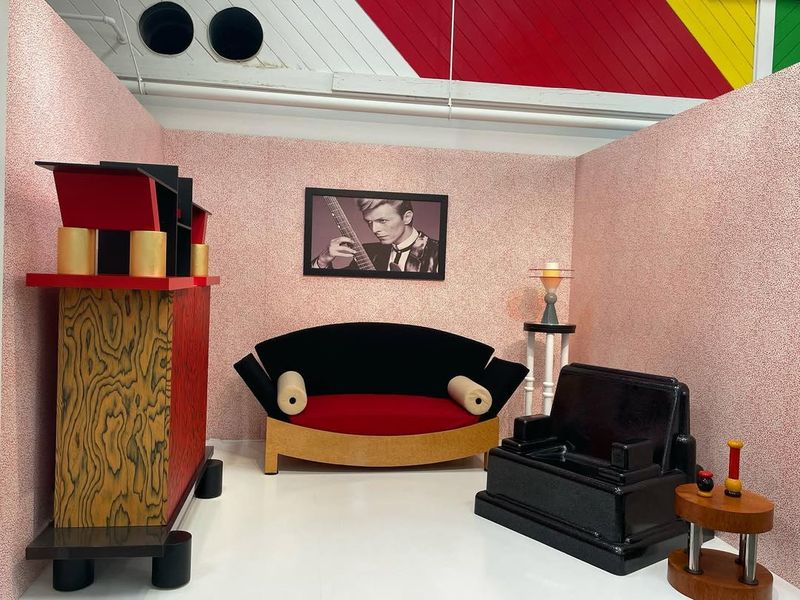
The Memphis design movement had a significant impact on 80s interiors, characterized by bold colors, abstract shapes, and unconventional forms.
This playful style was a reaction against traditional design norms.
Interiors featured mismatched furniture, asymmetrical layouts, and creative art pieces that defied conventional aesthetics.
The embrace of Memphis design highlighted the era’s appreciation for whimsical and avant-garde approaches, making spaces feel innovative and lively.
5. Mirrored Walls and Ceilings
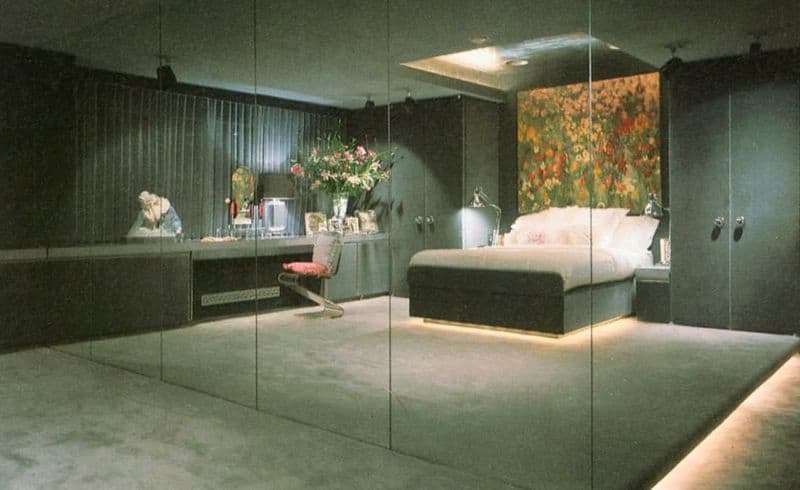
Mirrored walls and ceilings were a popular choice in 80s interiors, creating an illusion of more space and light.
Bedrooms and living areas often featured these reflective surfaces to amplify a sense of luxury.
Mirrors were strategically placed to reflect natural light and make rooms feel larger and more open.
This trend was part of the era’s fascination with opulence and modernity, adding a touch of glamour to everyday spaces.
6. Bold Graphic Art

Bold graphic art was a defining feature of 80s decor, characterized by bright colors and dynamic compositions.
Art pieces often became focal points, energizing rooms with their presence.
These artworks were typically large-scale, echoing the decade’s love for impactful and expressive design elements.
Incorporating graphic art into interiors allowed for a personalized touch, reflecting individual tastes and the creative exuberance that was emblematic of the 1980s.
7. Bold Geometric Patterns
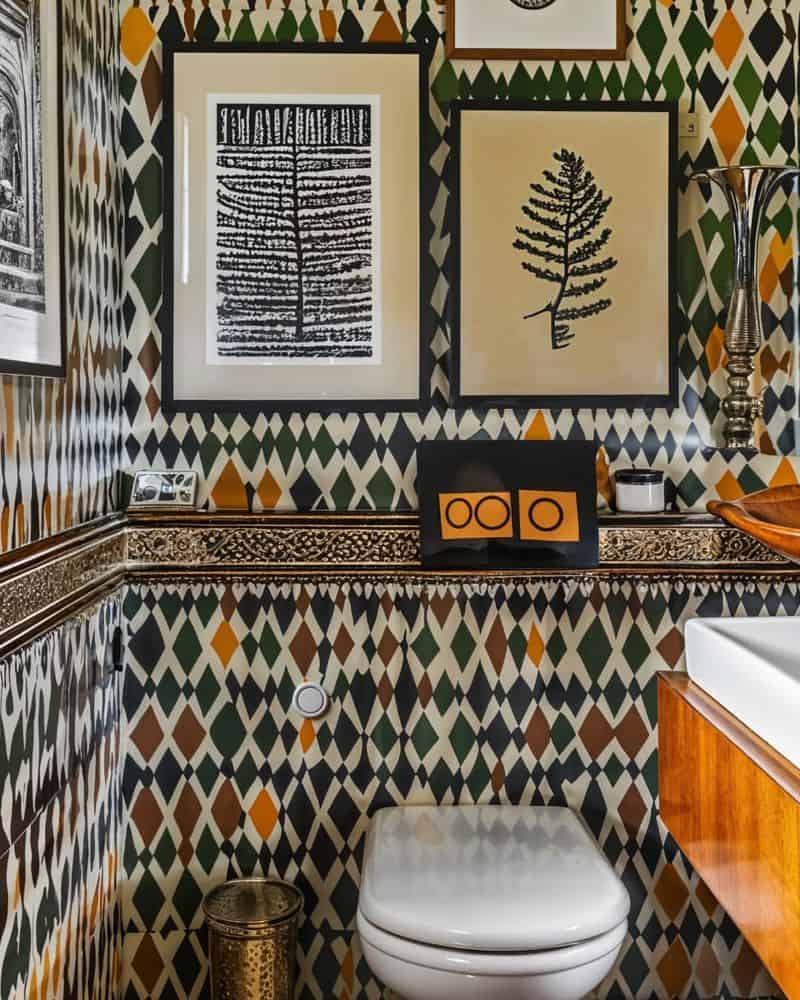
Bold geometric patterns were a hallmark of 80s interiors. Walls often featured wallpaper with striking, angular designs in bright colors.
These patterns extended to carpets and furnishings, creating a cohesive look.
Geometric shapes like triangles, circles, and zigzags adorned everything from cushions to bedspreads.
This trend offered a playful and dynamic aesthetic, breaking away from the subtler designs of previous decades.
These bold designs were a reflection of the era’s love for experimentation and vibrant self-expression.
8. Open-Shelving Kitchens
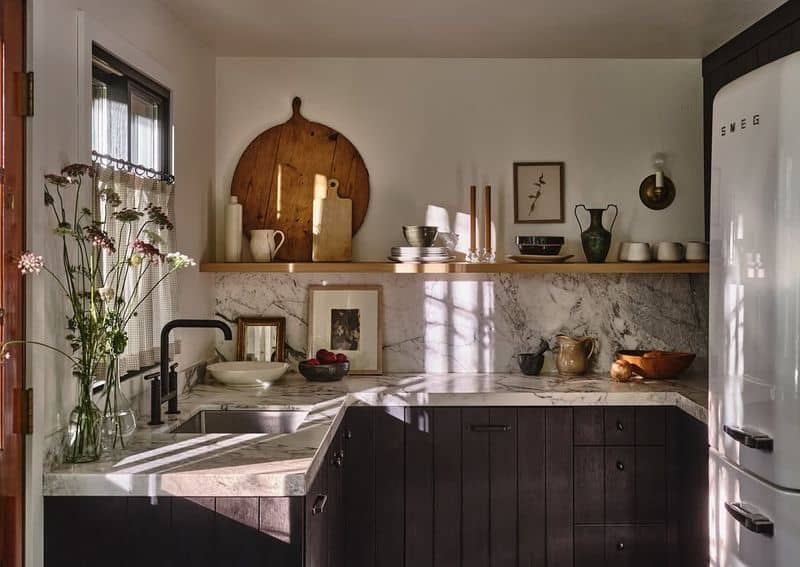
Open-shelving in kitchens was a trend that emerged in the 80s, providing both practicality and style.
Wooden shelves displayed colorful dishware and retro kitchen accessories, adding character to the space.
This design choice made kitchens feel more open and accessible, encouraging the display of personal collections and vibrant cookware.
It was a functional yet decorative approach that highlighted the era’s emphasis on individuality and creativity in domestic spaces.
9. Rattan and Wicker Elements
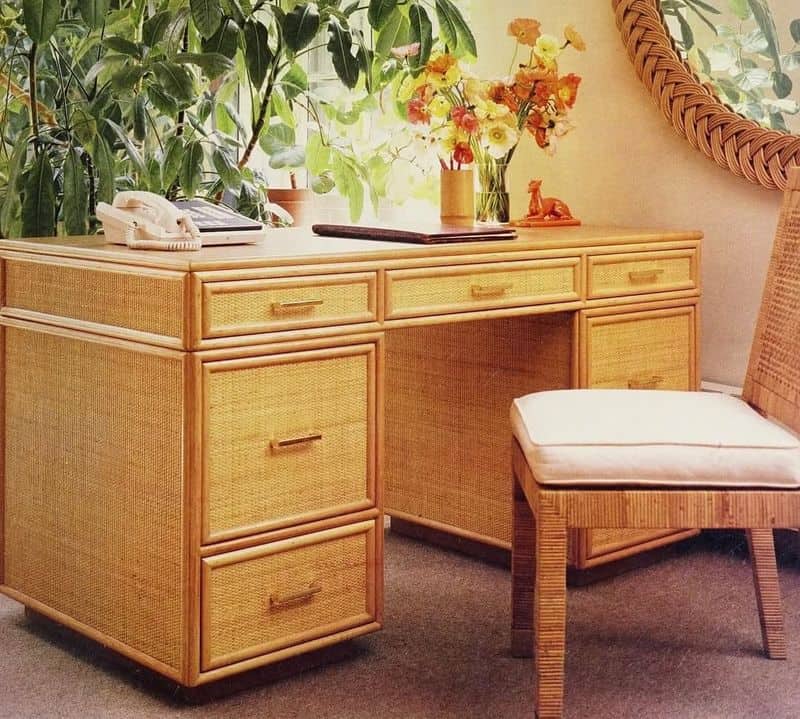
Rattan and wicker elements brought a touch of natural beauty to 80s interiors.
These materials were used in furniture like chairs, tables, and decorative accents, lending a bohemian flair.
Sunrooms and patios often featured rattan and wicker, complemented by lush plants and natural textures.
This trend fostered a relaxed and airy ambiance, aligning with the decade’s interest in blending indoor and outdoor living spaces harmoniously.
10. Glass and Chrome Furniture

Glass and chrome furniture defined the sleek, modern aesthetic of the 80s.
Glass-topped tables combined with chrome legs were a popular choice for dining rooms and living spaces.
The reflective surfaces of chrome added a sense of luxury and spaciousness, complementing the bright color schemes of the decade.
This material combination was often seen in chairs, coffee tables, and even lighting fixtures, embodying the era’s fascination with futuristic design elements.

